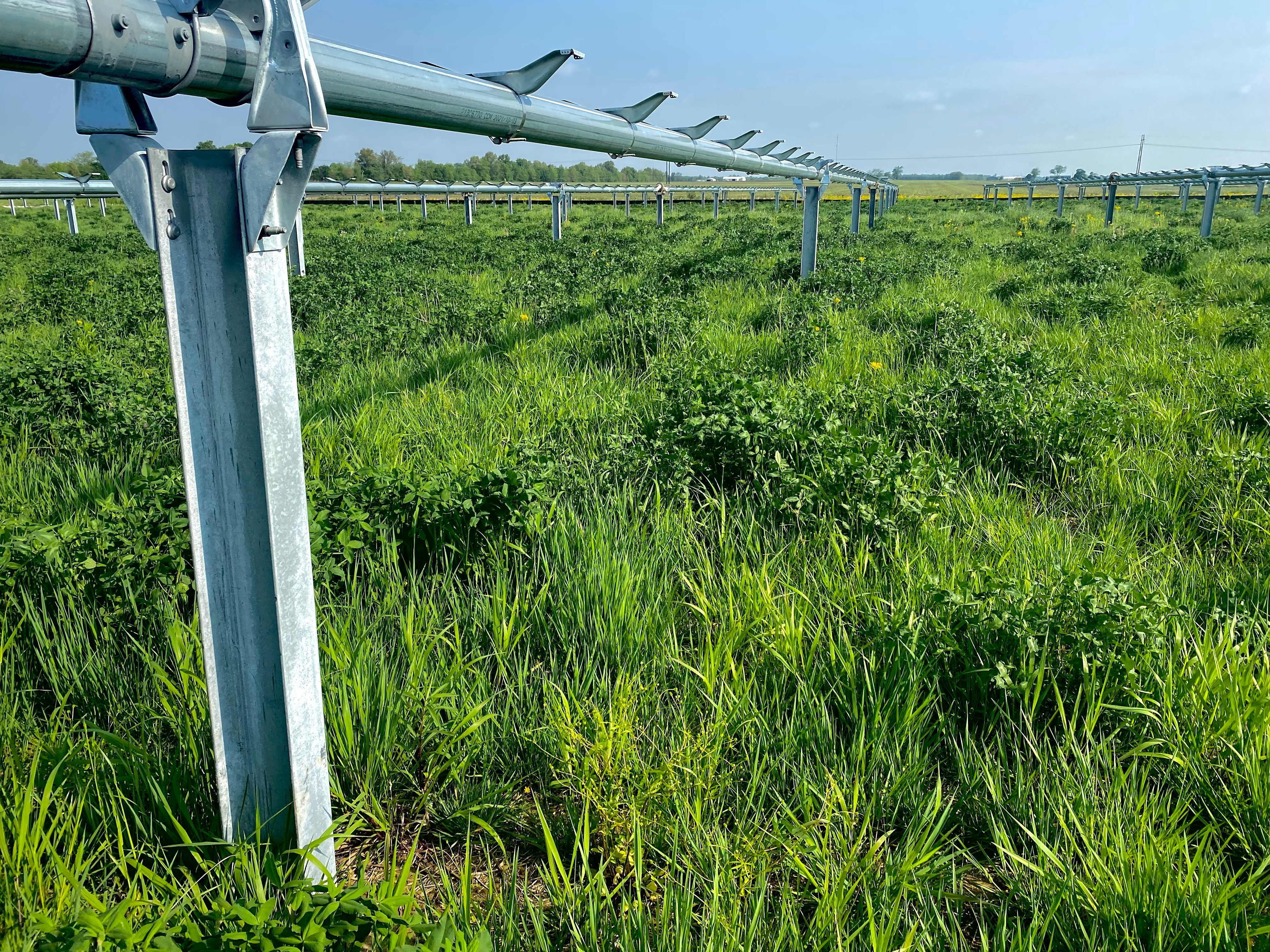Energia Limpa
Expertise
Projetos
Invenergy Services
Parceiros
Quem Somos
Notícias e Informações

Sep 14, 2022
Linhas elétricas
Why Vegetation Management Is Important at Solar Energy Sites
Por Invenergy Team

Did you know that in addition to generating limitless clean, emissions-free power, solar farms can also contribute to habitat restoration and increased soil health? Invenergy is among the first in the industry to have a dedicated Vegetation Management team, and the team uses their collective experience in large-scale restoration work across many different landscapes to promote science-based solutions to promote successful revegetation at our project sites.
“We work with the mindset of being good land stewards with long-term vision,” says Vegetation Management Associate Rob Schultz. “Revegetation has historically been overlooked as an important aspect of site development within the industry and our team is working to make it a priority here at Invenergy.”
Today, Schultz and the Vegetation Management team have more than 75,000 project acres under vegetation and soil management plans that include planting naturalized species, attracting pollinators, preserving topsoil, curbing erosion from wind and water, and managing noxious weeds. These plans are a vital step in helping Invenergy build a more sustainable world and work we are proud to do as an industry leader.
Vegetation management contributes to habitat restoration: Invenergy works with experts and consultants to develop the optimal mix of native and naturalized grasses and wildflowers for each site. Solar arrays sit high enough that this growth can flourish, providing habitats for pollinators and other vital species. Our sites also work with third-party monitoring services to ensure a healthy vegetative community throughout a project’s lifespan.
Vegetation management stabilizes land: Preconstruction seeding stabilizes soil throughout the site construction process. As vegetation takes root (pun intended), root and leaf systems strengthen soil structure against erosion and runoff.
A 2021 study by the United States Department of Energy compared sites across the Midwest before and after solar facilities with vegetation and soil management plans were developed. The study showed sites with “native grassland habitat produced a 3-fold increase in pollinator supply and a 65% increase in carbon storage potential [and saw] increases in sediment and water retention of over 95% and 19%, respectively.”
Vegetation management maintains soil health: Healthy topsoil is the lifeblood of any farming operation. Planting naturalized grasses and forbs at solar sites gives the soil a chance to recharge and rebuild. By establishing perennial vegetation, soil microbial activity, nutrient cycling, water retention, and carbon sequestration rates are all increased leading to a healthier soil system that will benefit vegetative communities and crop harvests for future generations.
If a project is decommissioned and the site transitions back to agricultural use, landowners can expect healthy, fertile soil. Additionally, not tilling the soil twice each year sequesters significant amounts of carbon that would otherwise be released into the atmosphere during planting and harvest.
As Invenergy continues to develop sustainable power projects that reduce reliance on fossil fuels and strengthen the country’s electric grid, we will ensure sustainability is a key factor in how these projects are developed and operated. Our Vegetation Management and Environmental Compliance and Strategy teams are always exploring innovative ways to do this, and we look forward to continuing adding benefits to our projects.
Energia Limpa
Expertise
Parceiros
Notícias e Informações
© 2023 Invenergy